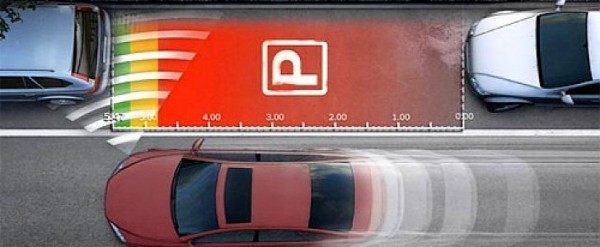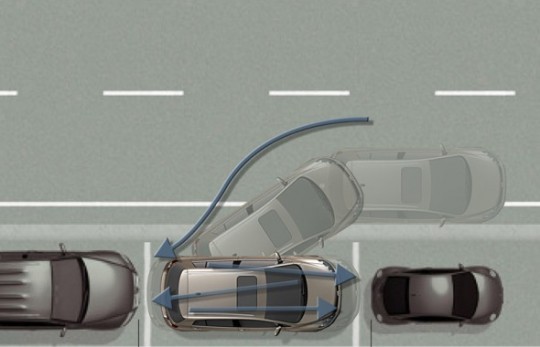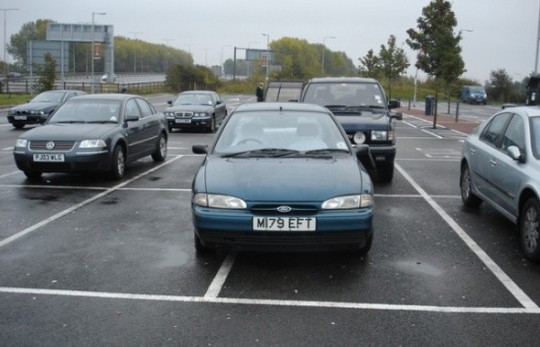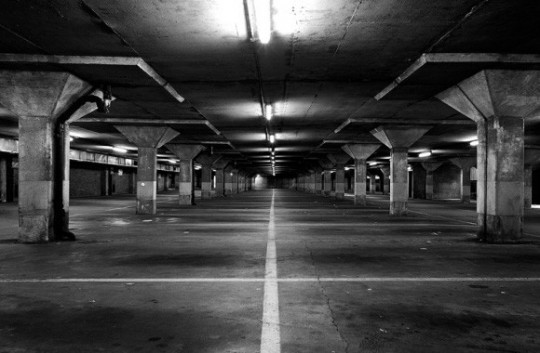 7 photos
7 photos






Finding a parking spot
 The prerequisite for a perfect parking is finding a spot. The reason behind many shopping center parking lot quarrels, the parking spot is often considered as a space, no matter what the size, where you can leave your car. Of course, all is not that simple.
The prerequisite for a perfect parking is finding a spot. The reason behind many shopping center parking lot quarrels, the parking spot is often considered as a space, no matter what the size, where you can leave your car. Of course, all is not that simple.
To park as easy as possible, you must first find a parking spot your car can fit into. You may consider this common sense, yet we guarantee you some of us drivers find the smallest parking spot available and then fight to stick their car in there in the most unnatural positions.
So, find a parking spot your car can fit into. ALWAYS this spot must be bigger than your car. Unfortunately, we can't tell you where to find a proper parking space and, depending where you live, you may spend more time trying to find a parking space than you did coming home from work. We do have some piece advice though… Humans were intended for walking, so there is no tragedy if you can't find a spot two feet away from your front door. Leave your car in a safe place, even if that safe place is some distance from your home.
Parking Maneuvers
 There are two types of parking spots usually available to today's motorists: parallel and reverse. We will treat them separately.
There are two types of parking spots usually available to today's motorists: parallel and reverse. We will treat them separately.
Parallel parking is the most used methods of parking and it is included in most countries' drivers' examination procedures. And trust us, it is a lot easier than it looks.
Finding a big enough spot where to parallel park is also easier than it looks. It you are unsure of the dimensions of your car, you need not get out of the car and tape-measure the spot. Position the car parallel to the spot where you want to park. Make sure the front end of your car is right behind the rear end of the car in front. Look back and see if the rear end of your car is clear of the car behind you. If it is, that spot is a winner.
Reverse parking is most common in parking lots. Finding a spot to perform this maneuver is as easy as the previous one, if not easier. The width of the car is easier to appreciate, as it is basically a few inches wider than the interior space of the car. The trick is to find a parking spot wide enough to allow you to open the doors once the maneuver completed. Usually, leaving at least 50 cm (1.6 feet) of clearance to both sides of the car should insure a successful and injury-free exit.
How to Parallel Park
 Once you found a suitable space to park you car, it is time to park. Drive forward and stop parallel to the car behind which you will park, leaving some 1 meter of clearance between the two vehicles. The two cars need to be at least nose-to-nose for the parking to work effectively. Engage the emergency lights to warn incoming motorist of your intentions.
Once you found a suitable space to park you car, it is time to park. Drive forward and stop parallel to the car behind which you will park, leaving some 1 meter of clearance between the two vehicles. The two cars need to be at least nose-to-nose for the parking to work effectively. Engage the emergency lights to warn incoming motorist of your intentions.
Once you aligned yourself with the other car, put your vehicle in reverse and begin the maneuver. Keep the wheel straight until the rear end of the other car appears in the corner of your back side window. Once you see it, turn the wheel full-right (full-left for right hand drive countries).
Keep going until the rear end of the other car aligns with the side mirror of your car. While still moving, turn the wheel in the opposite direction. At this point, you should pay attention to see if the nose of your car clears the back end of the other one.
Once you cleared the other car, slowly straighten the steering wheel, for a perfect parking. If you feel the car is not properly aligned, you may move forward and backward accordingly.
Dos and Don
9;ts
 Parallel parking is usually done amidst ongoing traffic. When you park, you need to be sure there is no car behind you. If there is, be sure to put your emergency lights on, so that the other drivers understand you need the space to maneuver. In case you park on a two-lane road, make sure the other lane is free as well when you begin turning the wheel.
Parallel parking is usually done amidst ongoing traffic. When you park, you need to be sure there is no car behind you. If there is, be sure to put your emergency lights on, so that the other drivers understand you need the space to maneuver. In case you park on a two-lane road, make sure the other lane is free as well when you begin turning the wheel.
Don't park at high speeds. Parallel parking, although easy, requires some level of skill and you won't be able to correctly appreciate when to turn what at higher speeds. Keep the speed constant throughout the maneuver and don't stop the car until you have finished.
Don't lose your temper. If it takes you some time to park, the other motorists may become impatient and aggressive. Let them pass if you have no choice, or continue your maneuver without getting all worked up about it.
Try and leave room for the other cars to exit their parking spot. Make sure there is enough clearance from both the vehicles you are parked in between.
If you feel there's no way your car can fit into a spot, then you're right. Don't go about trying to squeeze it in or pushing other cars out of the way, no matter what. As we said, you have legs, two of them, so find another spot and walk the rest of the way.
How to Reverse Park
 The other type of parking is a lot easier than the parallel one, as it requires fewer moves from your part. As we said above, you need to find a place big enough to allow you to open the door without hitting the other cars, as well as leave room for other drivers to get into and out of their vehicles.
The other type of parking is a lot easier than the parallel one, as it requires fewer moves from your part. As we said above, you need to find a place big enough to allow you to open the door without hitting the other cars, as well as leave room for other drivers to get into and out of their vehicles.
Once you find the spot, make sure you position the car so that that the rear of your car fits equally between the two flanking vehicles. As usually you will need to perform the maneuver diagonally, the starting position will find the steering wheel turned half way to the left or right. Once you begin rearing in the spot, slowly turn the wheel in its idle position. You should begin doing this as soon as the rear end of your car has entered the space between the two other vehicles.
You may wonder why should you go to all this trouble, when you can choose the easy way out and stick the car into the spot front-first. The answer is simple. As the front wheels are the ones providing steering, parking backwards gives you a lot more options when exiting the parking spot. Parking front first will limit these options, as the two flanking cars will prevent you from turning the wheel in due time.
Dos and Don'ts
 The single most important unwritten rule is to allow enough space for both you and the others to get in and out of the car. Secondly, this type of parking spot is usually marked with the white or yellow lines and, contrary to what some of you may think, the car goes in between the two lines.
The single most important unwritten rule is to allow enough space for both you and the others to get in and out of the car. Secondly, this type of parking spot is usually marked with the white or yellow lines and, contrary to what some of you may think, the car goes in between the two lines.
Obeying the marking allows more cars to fit into the parking lot and we are sure you hate it too when someone occupies two spots by parking on top of the lines.
And thirdly, no matter the clearance between your car and the others, the space barely allows you to get out of the car. So don't go slamming your door around and damaging other cars.
If You Mess Up…
…or should we say "when you mess up". Sorry, but there's no going around this. At one point, you will definitely hit the car in front or behind you, or a pole, or do something you did not plan on doing. The funny part is that most of these minor parking fender-bender mishaps do not take place while parking, but when you leave the parking lot, so pay attention while doing this too.
When it will happen to you, don't panic. The damages you can cause the other car are minor, so there's no need to get all worked up about it. If the owner of the other car is around, go to him/her and proceed to deal with the accident according to the laws of the country you live in.
If there is no driver around, make sure you leave him a note with your phone number, so he/she can contact you and do the necessary paperwork. There's no shame in admitting blame. As you'd hate finding your car all scratched up and have no one to blame, try and not put someone else in the same situation.








